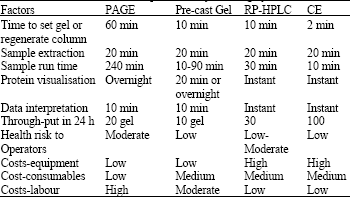Research Article
Study of Two Main Approaches-Electrophoresis and Chromatography as Varietal Identification Methods in Rice
Department of Toxicology, Mazandaran University of Medical Sciences, Sari, Iran
P. Valipour
Department of Textile Engineering, Islamic Azad University, Qaemshahr Branch-Qaemshahr, Iran
A.G. Ebadi
Department of Medicinal Plants, Islamic Azad University, Qaemshahr Branch, Center of Jouybar, Jouybar, Iran









